1918
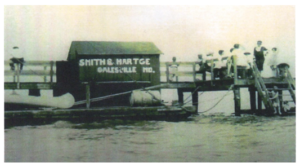 Brothers Nelson, Wilmer, and J. Edward reopen the family oyster packing business with a new name, Smith Brothers, Inc. Nelson Smith and Oscar Hartge begin building piers and bulkheads during the Summer.
Brothers Nelson, Wilmer, and J. Edward reopen the family oyster packing business with a new name, Smith Brothers, Inc. Nelson Smith and Oscar Hartge begin building piers and bulkheads during the Summer.
1920-1922
With their seasonal oyster-packing business well underway, Smith Brothers pursues off-season work driving pile and other small construction projects.
1923
Major purchase of 12' x 20' scow from Captain Oscar Hartge propels Smith Brothers, Inc. to develop their pile driving business. Nelson, Eddy, Wilmer, and young Cawood begin building some of the first private piers around West River.
1928
Smith Brothers awarded the contract to repair many state and county roads following extensive flooding from a cyclone that passed over the Western Shore.
1929
Engine expert Robert Leatherbury joins Smith Brothers, working with Wilmer. Wilmer leaves partnership to go into the restaurant business.
Early 30's
Added two Erie steam cranes to equipment fleet. Bought first large pile driver known as "The Rattler" (Robert's rig).
1933
Company departs the seafood business to focus on the construction market. Category 4 hurricane in late August devastates with loss and repairs to rigs and partially finished work. The company loses 50% of its value.
Mid 1930's
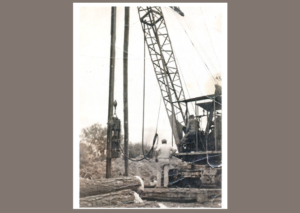 The Smiths bought their first self-propelled and more efficient Erie steam crane. The particular Brownhoist hammer pictured here now stands at the Smith Brothers entrance.
The Smiths bought their first self-propelled and more efficient Erie steam crane. The particular Brownhoist hammer pictured here now stands at the Smith Brothers entrance.
Late 30's
One of the first contractors to use the German-made diesel hammer pile driver on the Chesapeake Bay.
1937-1940
Company enjoys reputation for doing good work. More contracts and work begins to come through. Smith Brothers begins to see daylight although profits were low.
1945
Eddy quotes Washington philanthropist Charles Glover a price on shoreline work for the 265-acre land known as Bayfields. It was at this time that Eddy expressed interest in the land, and Smith Brothers bought the land for $65,000. This was the first of many successful land deals.
1946-50
Each of the brothers and Robert forms his own crew. Crews (usually comprised of an operator, firemen, and a couple of laborers) stayed together for years, functioning like a fine-tuned machine. Most had grown up together with the Smiths.
1950's
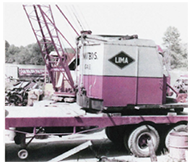 Cawood Smith is instrumental in Smith Brothers' purchase of first very large Lima crane, enabling heavier work on the water. In the fleet for nearly half a century, this floating crane is the reason why the company survived.
Cawood Smith is instrumental in Smith Brothers' purchase of first very large Lima crane, enabling heavier work on the water. In the fleet for nearly half a century, this floating crane is the reason why the company survived.
1954
Smith Brothers creates subsidiary Gale Construction. At one point, Gale Construction was building five bridges at one time on the approach to the Baltimore Harbor Tunnel. Smith Brothers could do all the pile driving and Gale Construction finished the road. Gale was eventually absorbed back into Smith Brothers after longtime foreman Jimmy Munz died.
50's and 60's
Much of the work was on the Eastern Shore, with interesting jobs on the water such as Cawood's work utilizing hardhat divers to lay a cable across the Chesapeake Bay.
1964
Purchased and mounted 45-ton lifting capacity crane barge on 110' x 44' x 7' spud barge with a generator and crew living quarters. The barge was named J. Edward and was operated by Edgar Bryan for nearly half a century.
1965
The brothers buy Taylor Island Marina - a great staging area for Eastern Shore jobs.
1970's
Nelson Smith is company President. Nelson offers Kenneth's son Ken a stint at running the marina where he and his wife and young son stayed on until the marina sold in 2008.
1979
Cawood runs salvage operation to raise The Hayruss IV from the Bay, using The J. Edward for the project.
1984
Kenneth formed a new company called West River Towing, backing Oscar Hartge's grandnephew Chris Schlegel. Chris ran barge loads with Lady D and performed general towing in the Chesapeake for a few years until Lady D was sold in 1989.
1989
 J. Edward's crew awarded Civilian Medals of Honor after assisting the Naval Airbase at Patuxent River in sensitive airplane recovery operation. Preston Hartge among the crew was on his first real project with Smith Brothers, foreshadowing what would become a thirty-year career.
J. Edward's crew awarded Civilian Medals of Honor after assisting the Naval Airbase at Patuxent River in sensitive airplane recovery operation. Preston Hartge among the crew was on his first real project with Smith Brothers, foreshadowing what would become a thirty-year career.
Early 1990's
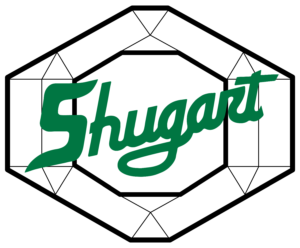
Kenneth embarks on developing barge rental business, forging relationship with Frank Shugart of Chester, South Carolina's sectional barge company Shugart Manufacturing.
Mid 1990's
Jeff Smith recognized that Smith Brothers' shift from heavy construction to equipment rentals was imminent. Bridge builders and marine contractors who were once competitors became customers.
1995
Preston Hartge officially joins Smith Brothers after having provided several years freelancing work for the company. Preston brings crane operating and boat-building skillset to the formidable team.
1997
First 400-hp truckable tug built by Marine Inland Fabricators, “The Three Sisters”, is delivered. Over the next two decades, Smith Brothers took delivery of another eleven boats (now 600hp) from Marine Inland Fabricators and continues today as another delivery is expected in early 2025.
1998-2003
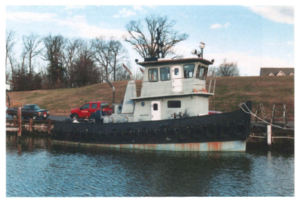 Boat designer Oliver Bryant drew on a 50-year-old design with modifications to develop plans for Smith Brothers to start building their own 50’ x 18’ x 8’6” tug. Commissioned and christened in 2003, Megalodon took her name from the prehistoric shark that roamed the Chesapeake.
Boat designer Oliver Bryant drew on a 50-year-old design with modifications to develop plans for Smith Brothers to start building their own 50’ x 18’ x 8’6” tug. Commissioned and christened in 2003, Megalodon took her name from the prehistoric shark that roamed the Chesapeake.
2000
Construction began on first simple deck barge. At 90’ x 30’, the “Russell” was first of many to be built at the yard: “Rebecca, Kathryn,” “Little Mac,” and “Smith Bros.”
2002
Kenneth Smith takes delivery of 110-ton Terex HC110 crawler crane from Atlantic Coast Cranes.
2010-2012
Impressed by the Megalodon, Virginia contractor, Jim Gunn orders a tug built by Smith Brothers with customized hull design and heightened superstructure. Later named for the vessel’s operator, “Capt. Dale” is delivered in 2012.
2013-2014
Overseen by Preston Hartge, another Oliver-Bryant designed tug, the 50’ x 20’ x 7.5’ model bow “Capt. Kenneth” is built drawing from the lessons learned from the previous two tugs. At the age of 99, Kenneth Smith himself christened the hard-working namesake.
2018
Kenneth’s son, Jeff Smith, is the president of Smith Brothers and the last Smith involved in the company.
2019
 McLean Contracting Company acquires the assets of Smith Brothers, Inc., a deal which connected two one-hundred-plus-year-old Maryland companies, both operating in the heavy civil and marine contracting markets.
McLean Contracting Company acquires the assets of Smith Brothers, Inc., a deal which connected two one-hundred-plus-year-old Maryland companies, both operating in the heavy civil and marine contracting markets.
2025
Capt. Kenneth tug assists at the ready in the McLean Contracting Company Curtis Bay location with Chesapeake Bay Bridge Eastbound deck replacement project.
February 2025
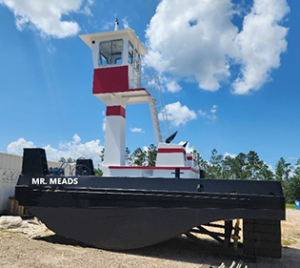 A new 600hp truckable tug Mr. Meads built by Marine Inland Fabricators is delivered and available for charter.
A new 600hp truckable tug Mr. Meads built by Marine Inland Fabricators is delivered and available for charter.
References:
Smith, K. B. (1988). Firm foundations: The story of smith brothers, inc. and the memoirs of J. Edward Smith. K. Bergren Smith.
Smith, K. B., & Smith, A. (2018). Booming up one hundred years of stories from smith brothers, inc. Kathy Bergren Smith.
